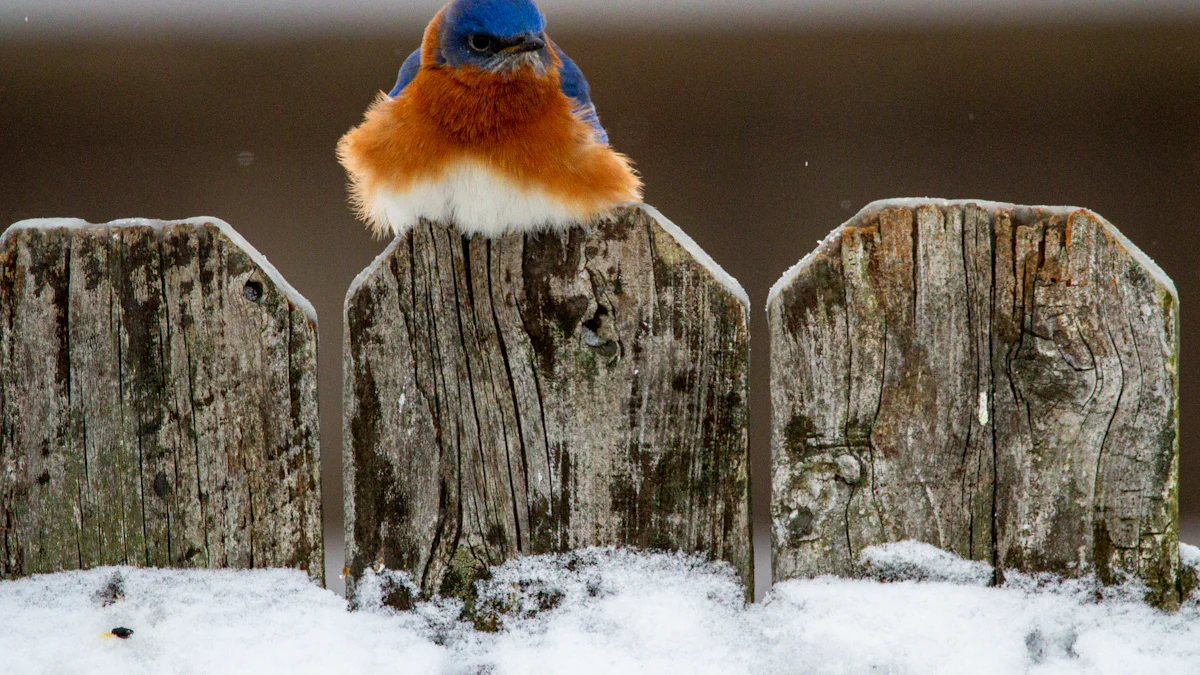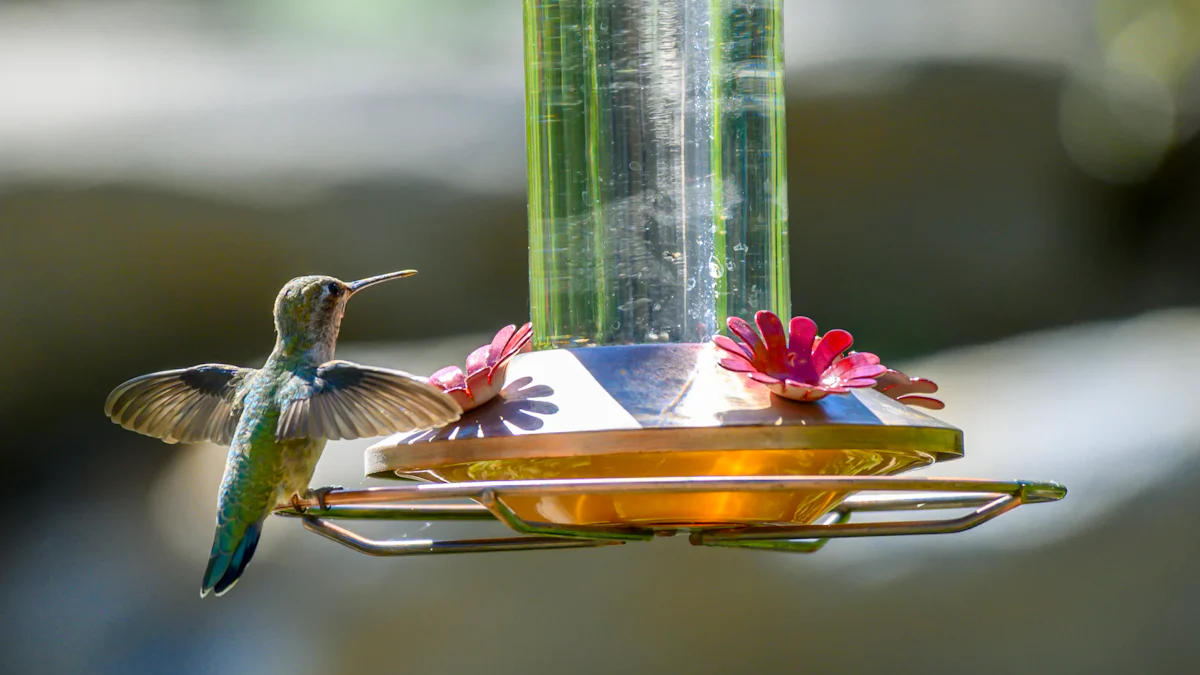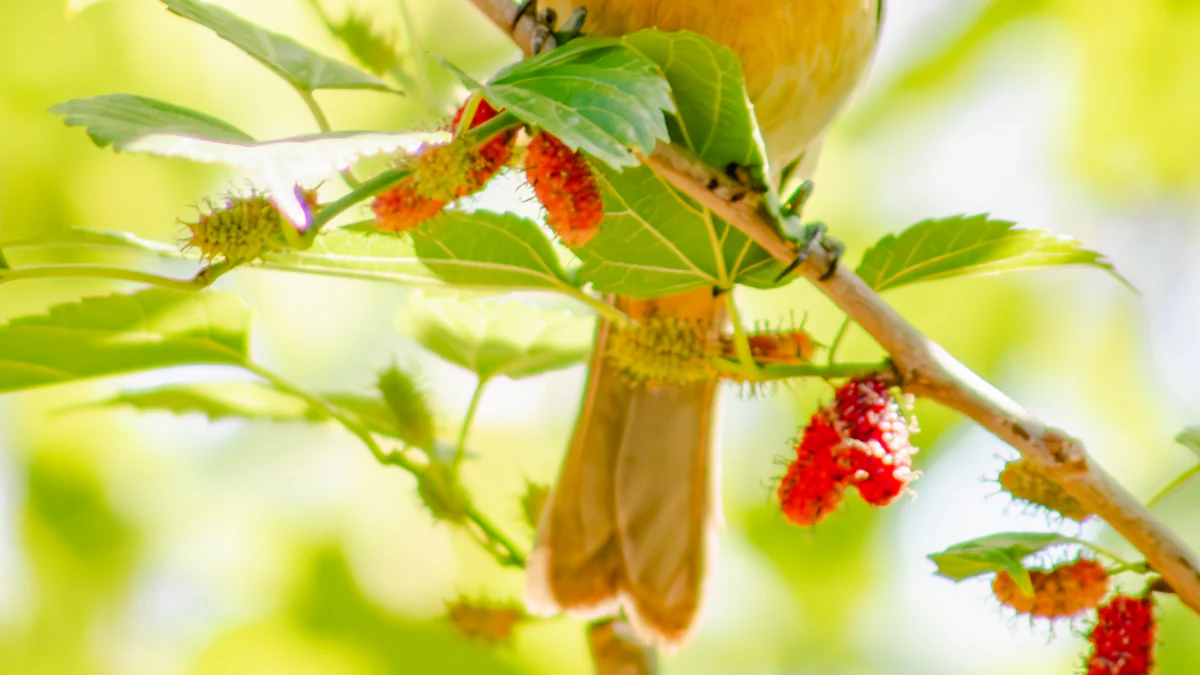
Imagine serving your backyard birds a gourmet treat packed with nutrients. Meal Worms Bird Food is exactly that! These tiny, wriggling wonders are a powerhouse of nutrition, offering birds high levels of protein, fats, and moisture. Birds rely on these nutrients to stay energetic, build strong muscles, and grow vibrant feathers. During tough times like breeding seasons or freezing winters, meal worms bird food becomes a lifeline. They help birds survive, thrive, and even raise healthy chicks. Whether live or dried, meal worms bird food is the ultimate option that keeps your feathered friends coming back for more.
Key Takeaways
- Mealworms are a nutritional powerhouse for birds, providing essential protein, fats, and moisture that support energy, muscle development, and feather growth.
- Feeding mealworms during breeding season is crucial, as they help parent birds maintain energy and ensure healthy growth for their chicks.
- In harsh weather conditions, mealworms serve as a vital food source, offering quick energy and hydration to help birds survive tough times.
- Both live and dried mealworms are effective; live ones attract birds with their movement, while dried ones are convenient and easy to store.
- To attract more birds, mix mealworms with familiar foods like seeds or scatter them on the ground to mimic natural foraging behavior.
- Using the right feeder is essential; shallow dishes or tray feeders make it easy for birds to access mealworms and keep them fresh.
- Consistency in feeding is key—regularly refill the feeder to establish a reliable food source that keeps birds returning to your yard.
What Makes Meal Worms Bird Food So Nutritious?

Mealworms are like the ultimate energy bars for birds. Packed with essential nutrients, they provide everything your feathered friends need to stay healthy and active. Let’s dive into what makes these wriggly snacks so special.
Nutritional Profile of Mealworms
Mealworms are tiny but mighty when it comes to nutrition. They are loaded with protein, which is crucial for muscle development, feather growth, and overall strength. Birds, especially during breeding seasons, need this protein boost to raise their chicks and maintain their energy levels.
Fun Fact: According to studies, mealworms are rich in vitamins, minerals, and fats that support bird health and reproductive success. They even help birds grow stronger, more vibrant feathers!
In addition to protein, mealworms offer a high-fat content. This fat acts as a quick energy source, helping birds survive cold winters or long migrations. Plus, mealworms contain moisture, which keeps birds hydrated, especially in dry seasons when water sources might be scarce.
Dried mealworms, while lacking the moisture of live ones, still pack a punch. They retain most of their nutritional value and are easier to store and handle. Whether live or dried, mealworms are a powerhouse of nutrients that birds can’t resist.
Why Birds Are Attracted to Mealworms
Birds don’t just eat mealworms for their nutritional value—they genuinely love them! Mealworms mimic the natural diet of many bird species. Insects make up a significant portion of what birds eat in the wild, so mealworms appeal to their instincts.
Scientific Insight: Research shows that mealworms attract a wide variety of birds, including robins, bluebirds, sparrows, and wrens. These birds see mealworms as a natural and familiar food source.
Mealworms also stand out because of their texture and movement. Live mealworms wriggle, catching the attention of birds and triggering their hunting instincts. Even dried mealworms, when mixed with seeds or suet, add variety to a bird’s diet, making your feeder a hotspot for avian visitors.
If you want to attract more birds to your backyard, mealworms are the way to go. They’re like a gourmet treat that birds can’t resist. Add them to your feeders, and you’ll soon notice a diverse range of species flocking to your yard.
The Best Times to Feed Mealworms to Birds
Timing is everything when it comes to feeding birds. Mealworms, whether live or dried, can make a huge difference in a bird’s life depending on the season. Let’s explore the best times to offer these nutritious snacks and why they matter.
Breeding Season
Spring marks the start of the breeding season, a time when birds need extra energy and nutrients. Raising chicks is no easy task, and parent birds work tirelessly to find food for their young. Mealworms provide a perfect solution. Their high protein content supports muscle development and feather growth in chicks, while the fat gives parent birds the energy to keep up with their demanding schedules.
Did You Know? Bluebirds, robins, and wrens are especially fond of mealworms during this time. They rely on them to ensure their chicks grow strong and healthy.
Adding mealworms to your feeders during the breeding season can help birds thrive. You’ll not only support their survival but also enjoy the heartwarming sight of parent birds bringing their young to your yard.
During Harsh Weather
Winter and extreme weather conditions can be tough on birds. Food becomes scarce, and birds need extra calories to stay warm and survive. Mealworms act as a lifeline during these challenging times. Their high-fat content provides quick energy, while the protein helps birds maintain their strength.
Pro Tip: Place mealworms in a sheltered feeder during winter to protect them from snow and rain. This makes it easier for birds to access the food they desperately need.
By offering mealworms in harsh weather, you give birds a fighting chance. You’ll likely see a variety of species flocking to your feeder, grateful for the much-needed nourishment.
Year-Round Benefits
Mealworms aren’t just for special occasions—they’re a year-round treat that birds love. During the summer, they help birds recover from the energy spent on migration and nesting. In fall, they prepare birds for the long journey ahead by boosting their fat reserves. Even in mild weather, mealworms add variety to a bird’s diet, encouraging natural foraging habits.
Fun Fact: Almost 80% of bird species include insects in their diet. Mealworms mimic their natural food, making them an irresistible choice.
Incorporating mealworms into your feeding routine ensures birds always have access to a reliable source of nutrition. Whether it’s Meal Worms Bird Food or another option, you’ll create a haven for your feathered friends all year long.
Live vs. Dried Mealworms: Choosing the Right Option

When it comes to feeding birds, you have two fantastic options: live mealworms and dried mealworms. Each has its own unique benefits, and choosing the right one depends on your goals and preferences. Let’s break it down so you can make the best choice for your feathered visitors.
Benefits of Live Mealworms
Live mealworms are like the VIPs of bird food. Their wriggling movement grabs a bird’s attention instantly, triggering their natural hunting instincts. This makes live mealworms especially effective if you want to attract insect-loving species like bluebirds, robins, and wrens to your yard.
Quick Tip: Birds prefer live mealworms during breeding seasons. The extra protein and fat help parent birds stay energized while feeding their chicks.
Live mealworms also offer a slightly better nutritional profile compared to dried ones. They contain moisture, which is crucial for hydration, especially in dry weather. Plus, they promote natural foraging behaviors, giving birds a taste of the wild right in your backyard.
However, live mealworms require a bit more care. You’ll need to store them in a cool, dry place and feed them plant matter to keep them alive and healthy. But if you’re up for the challenge, the rewards are worth it. Your yard will become a bustling hub of bird activity.
Benefits of Dried Mealworms
Dried mealworms are the ultimate convenience food for birds. They’re easy to store, mess-free, and have a long shelf life. If you’re looking for a low-maintenance option, dried mealworms are your best bet.
Despite lacking the moisture of live mealworms, dried ones still pack a punch nutritionally. They’re rich in protein, fats, vitamins, and minerals that support feather growth, energy, and overall bird health. Birds may not chase after them like they do with live mealworms, but they’ll still happily gobble them up.
Fun Fact: Almost 80% of bird species include insects in their diet. Dried mealworms mimic this natural food source, making them an irresistible treat.
Dried mealworms are also budget-friendly. You can buy them in bulk and store them for months without worrying about spoilage. This makes them a practical choice for year-round feeding.
Tips for Preparing Dried Mealworms
To make dried mealworms even more appealing, you can prepare them in a few simple ways. Soaking them in water for 10-15 minutes rehydrates them, making them softer and easier for birds to eat. This is especially helpful for smaller birds or during breeding seasons when chicks need softer food.
Mixing dried mealworms with seeds or suet is another great idea. This adds variety to a bird’s diet and increases the chances of attracting different species to your feeder. You can also scatter them on the ground to mimic natural foraging conditions.
Pro Tip: Place dried mealworms in a shallow dish or specialized feeder to keep them clean and accessible. Birds will appreciate the effort, and you’ll enjoy watching them flock to your yard.
Whether you choose live or dried mealworms, both options provide excellent nutrition for birds. Meal Worms Bird Food is a versatile and valuable addition to any bird-feeding routine. By understanding the benefits of each type, you can create a feeding strategy that keeps your feathered friends happy and healthy.
Practical Tips for Feeding Mealworms Effectively
Feeding mealworms to birds can transform your backyard into a lively bird haven. To make the most of this nutritious treat, you need the right approach. Here’s how you can ensure your feathered visitors enjoy their mealworms to the fullest.
Choosing the Right Feeder
The feeder you choose plays a big role in how birds access mealworms. A shallow dish or tray feeder works best for both live and dried mealworms. These feeders allow birds to spot the mealworms easily and pick them up without hassle. If you’re using live mealworms, opt for a feeder with smooth, high sides to prevent any daring escape attempts by the wriggly critters.
Expert Tip: According to ornithologists, using specialized feeders can attract species like bluebirds, robins, and chickadees. These birds are particularly fond of mealworms and will frequent feeders that make access easy.
For added convenience, place the feeder in a visible yet safe location. Birds prefer spots where they feel secure from predators. A shaded area near shrubs or trees works perfectly. This setup not only attracts birds but also keeps the mealworms fresh for longer.
How Much to Feed
When it comes to feeding mealworms, balance is key. Overfeeding can lead to waste, while underfeeding might leave your birds unsatisfied. Start with a small amount, such as a handful of mealworms, and observe how quickly the birds consume them. Adjust the quantity based on their appetite and the number of visitors to your feeder.
Pro Tip: During breeding seasons or harsh weather, birds may need more mealworms to meet their energy demands. Increase the portion slightly during these times to support their needs.
Avoid filling the feeder to the brim. Birds enjoy fresh food, and leftover mealworms can attract unwanted pests. By offering just enough, you ensure the mealworms remain a tasty and nutritious treat.
Attracting Birds to Mealworms
If you’re introducing mealworms for the first time, patience is your best friend. Birds may take a little time to recognize this new food source. To speed up the process, mix mealworms with familiar foods like seeds or suet. This combination encourages birds to try the mealworms while enjoying their usual favorites.
Scatter a few mealworms on the ground near the feeder to mimic natural foraging conditions. Birds instinctively search for food on the ground, and this trick can grab their attention. Once they discover the feeder, they’ll keep coming back for more.
Fun Fact: Mealworms are a magnet for insect-loving birds. Bluebirds, wrens, and woodpeckers are just a few species that can’t resist this protein-packed snack. Adding mealworms to your feeding routine can create a vibrant bird-watching experience.
Consistency is crucial. Refill the feeder regularly to establish a reliable food source. Birds remember dependable feeding spots and will return often, bringing along their friends and family.
By following these practical tips, you can turn your backyard into a bustling bird paradise. Mealworms, whether live or dried, offer a nutritious and irresistible treat that keeps birds happy and healthy. With the right feeder, portion control, and a little creativity, you’ll enjoy the delightful sight of birds flocking to your yard.
Mealworms are a game-changer for your bird-feeding routine. They deliver essential nutrients like protein, fats, and vitamins that keep birds healthy and thriving. During breeding seasons or harsh winters, mealworms provide the energy birds need to survive and care for their young. By adding mealworms to your feeders, you attract a variety of species while supporting their natural foraging instincts.
Fun Fact: Mealworms even promote vibrant feather growth and stronger plumage, making your backyard visitors look their best!
Make mealworms a staple in your bird-feeding strategy, and watch your yard transform into a lively bird paradise.


